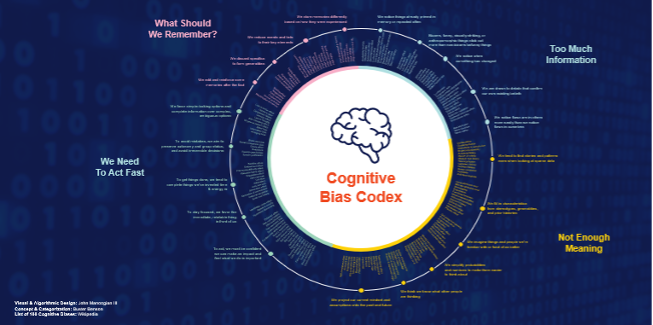No One Was Born an Effective Leader - Science of Effective Leadership Explained

Have you ever said, heard or read, “you were born to be a leader”?
Straight up, this is a lie. Not one human was born to lead effectively.
We can all lead. But to lead effectively, for me, this is black and white. No grey area here.
My definition of effective leadership in the context of this article is, “to achieve the results expected of you whilst sending your team home to their families less stressed than when they came.”
It’s about making people feel fulfilled, eager, and safe. Anything less than that is not effective. Are you an effective leader? Is your boss effective? If yes, believe me when I say, they didn’t wake up like that. Here’s why…
A 'Brainy' Look Into Great Leadership...
Scientific evidence predicts the probability of effective leadership is a nurtured set of values and behaviors.
Great leaders are shaped early on. Every leader sat in a highchair, before the boss’ chair. From an early age, their probability of developing leadership talent was determined by environmental indicators and signals to translate experience into expertise.
But research by PWC argues 30% are genetically destined to be leaders. But destined does not mean effective.
There are no guarantees, even with a genetical head start, you end up an effective leader. It still stands that leadership is an unnatural act.
Psychotherapist, Margaret Cochran says “We’re wired to worry”. “It’s a survival mechanism; our brains have not evolved much over the last 10,000 years, and we must remember where the tiger is more than where the blueberries are.”
Worry, especially the kind accompanying a drawn-out period of extreme uncertainty, has physical ramifications. Cochran adds:
“Our fight-or-flight response gets activated, then we end up with a whole lot of chemicals in the system. The uncertainty we’re currently experiencing is not a tiger we can run from, so it goes on and our bodies are full of cortisone and adrenaline”.
For teams to perform at their best, they need to think straight. Too much cortisone and adrenaline keep that tiger chasing your team.
Teams must feel safe in a worry-free environment to be their true selves and perform beyond expectations.
Cutting the Red Wire to Effective Leadership
Present-day humans are running advanced society software (modern technology) on caveman hardware (our brain).
Our brain’s processor isn’t big enough for the 21st Century. To function effectively, we’ve created mental shortcuts called heuristics to solve problems and make judgments quickly and efficiently. This way, we process information quickly without stopping and thinking to ensure we have enough resources to survive.
A bias is a negative result of a heuristic. There are over 165 known/documented biases, but there are hundreds, if not thousands of human biases affecting people on any given day. Here at DX, we have documented and researched dozens of biases that affect leaders and teams daily.
The main challenge for leaders is that it’s quicker and easier to assume something than it is to stop and think and “know” something. So, your brain wants to move on. This is good for them, but it’s not good for those they work with.
This is really why no one was born an effective leader. To do it effectively, you must fight your brain’s primal evolution and desire to survive. Gulp.
Leaders are humans and ineffective leadership is easy. They, like all of us, have blind spots created by the brain. The brain is SELF-ISH. We need leaders to be SELF-LESS to be effective. That’s why there are so few good leaders out there. It’s in our fibers.
By leaving those fibers unattended, and just doing what you brain says you should, leaders will be self-ish, self-centered and put themselves before their team. Take credit. Micro-manage teams to do things how they’ve always been done. Their team’s certainty’s is an afterthought.
Ultimately, that’s the brain’s number one protocol. Survival. To keep ME alive. To keep ME safe and certain.
An effective leaders’ primary purpose involves keeping their TEAMS safe.
What is the Cognitive Bias Codex? What Does it Mean for Leadership?
This fun little diagram is the cognitive bias codex.
Visual & Algorithmic Design: John Manoogian III
Concept & Categorization: Buster Benson
List of 188 Cognitive Biases: Wikipedia
So, no one was born to be an effective leader. You’ll have to work hard to become aware of, train and counter the brain’s primary purpose. Keep your team alive before yourself.
After thousands of years of evolution, the brain has become so vast. For simplicity’s sake, just know that the brain processes around 11 million pieces per second. Each one passes through the brain to scan for threats. The reptilian brain focuses on safety. Is this a threat? Do I need to fight or flee?
The human brain allows us to take the information and provide context, reason, and logic to it. If it doesn’t make sense, it triggers stress and anxiety.
Cognitive abilities are compromised when the brain’s perceived safety is attacked, meaning our logical brain responsible for creativity, decision-making, and self-control, goes off-line. Now, it’s very difficult to concentrate, make decisions or control emotions (Lupien, 2012).
So then effective leadership is very simple. Put the brains of those we serve into a certain, unthreatening, safe place so they can perform.
How? Let’s give you a head start.
4 Steps to Fight 4,000+ Years of Evolution
Step 1 - Clarity
The brain craves clarity. It was, and still is, necessary to the survival of 7.5 billion people. Back in caveman days, we needed to know what food was safe to eat, who was on saber tooth tiger duty, where the nearest place to take shelter was etc.
Clarity is a fundamental part of our early brain development and is highlighted in each major region.
Remember those 165 biases? One of them is the curse of knowledge: a cognitive bias that occurs during a conversation between humans and one individual unknowingly assumes the other has the same background to understand.
This happens daily. Your brain is selfish. It wants to survive. It’s quicker and easier to assume the person knows what you’re talking about, than it is to slow down and make sure they really know. It’s telling you “Don’t ask, just move on. All’s good here!”
You drop those acronyms like there’s no tomorrow, without considering “do they know what I am talking about?” and leave the conversation assuming they’ve understood everything you said.
The recipient says nothing. They don’t feel safe as their brain is now stressed with the acronym overload!
When new information doesn’t check into your library of knowledge, it activates your threat circuitry. The higher brain is a prediction machine, always assuring things in our world are familiar. Something as simple as an unknown acronym can trigger the threat circuitry.
We need certainty for cognitive ease, otherwise cortisone is released. We go into threat mode, switching off the decision-making part of the brain, and we can’t function at our optimal levels. People need clarity. Something as simple as finishing conversations with, “can you repeat back the notes we talked about?” Or re-reading an email before you send it, thinking “will the person receiving this understand what I’m talking about?”
In both cases, effective leadership involves using that one gem in short supply. Time. Just a quick slow down. Thinking, versus doing. For the benefit of others. Empathy. Effective leadership.
Not to mention hybrid working, economic and political forces heightening emotional strain in the volatile world we live in. To lead effectively is no easy task.
In the modern age of back-to-back meetings, we don’t have time to ask. We don’t have time to re-read emails. We don’t have time to save 30 mins’ planning time in our calendar. Without time, how can we even get past step 1?
There are 3 more steps by the way to be an effective leader and combat the brain!
Step 2 - Autonomy
The most successful tribes and societies were those who innovated and differentiated themselves. Tribe fitness was based on their abilities to evolve and adapt to accomplish goals. That’s how we developed new tools, new means of cultivation, and improve what’s already successful.
When we lack that control, we’re forced to comply at a large cost to our engagement. A little like micro-management. With little flexibility and control, this triggers the brain’s threat circuitry.
Stop telling your team how, where and when to get their work done. Start asking. Combat the law of least efforts bias and use the tools we were given. Two ears and one mouth, use them in that ratio.
Give them a strong purpose, a why, with crystal clear clarity and expectation, and then let them loose. Trust and flexibility go a long way in the modern workplace. Alas, its quicker and easier to tell you how to do things my way, than it is to allow you to make a few mistakes and do things your way while growing the muscle memory of your team. Time is an effective leadership killer.
Step 3 - Relationships
The brain is wired to establish, secure, and maintain interpersonal bonds, because in those early years, that was the most efficient way to survive (Dunbar, 1998).
We need a sense of belonging. We need to be valued for the human that we are.
If my values and skills are not wanted or listened to, the threat circuitry switches on again. Leaders need to demonstrate empathy. This, like anything effective, needs time. Leaders must make time for non-work conversations with teams. To find out what makes them tick. Who they are, where they come from. What made them the human they are.
That’s the secret sauce to effective leadership. To know your team at the human level gives you the data to truly treat them how they want to be treated.
But the conversational narcissism bias shows up all the time! It decreases empathy and certainly doesn’t show you’re listening. Coined by Charles Deber, conversational narcissism is, “the tendency to steer conversations back to yourself.”
I’m sure we’ve all fell victim to this ourselves (or know someone who has). Many times, it comes with intent to “connect” with another individual by relating to them…but it can just as easily appear as U-turning the conversation to you!
When you feel someone doesn’t have your back, your threat circuitry’s alive again. We must find time to build relationships. We are human after all.
Step 4 - Equity
Equity comes from desires to receive an adequate allocation of the resources of our tribe. If you have 10 people on your team, that’s 10 different preferences to serve. When we perceive something to be unfair, it activates the insula (Cheng, 2017). This is where disgust comes from. Disgust and perceived unfairness trigger the threat circuitry in the brain.
You can’t treat all 10 people the same. Impossible. No two people are the same, so equal won’t work. In fact, being equal with your team will cause someone to be disgusted and disengaged. By treating all 10 people how they want to be treated, and giving them the CARE, they need, this is the path to becoming an effective leader.
This is the CARE equation. C + A + R > E. This is an easy acronym for your brain.
As a leader, if I communicate clarity effectively to each team member, it gives them the autonomy to deliver on that clarity their way, allowing the leader more time to build strong relationships with individuals, obtaining data to know what makes them tick, to ultimately ensure equity is felt within the whole team.
That equity is a feeling of empathy and inclusion that makes people feel safe. Psychologically safe. Clarity, autonomy, relationships, and equity® = effective leadership.
CARE: The Four Essentials of Psychological Safety to Inspire High Performing Teams
To summarize, our brains receive stimuli that are filtered through the brain, to present a binary response. Is this information a threat to me? Yes, or no?
The response differs based on the individual, their interpretation, and their context leading up to it. As leaders, it’s important we avoid triggering threat responses in our team’s brains. Those threat responses prevent establishing and nurturing psychological safety, engagement, and performance in your team.
Effective leadership is to put the brains of those we serve in a safe place through just enough Clarity, Autonomy, Relationships and Equity® to that individual.
We are wired to win. It’s survival. Nearly everything we do is done subconsciously, processing those 11 million bits of information every second. Unless we find time to stop, think and slow down to combat those biases, we’re always out to prove ourselves and win at something. That unconscious selfishness triggers the threat circuitry of your team.
Effective leadership is to be self-less and build psychological safety within teams. Give them certainty and not ambiguity. Your team want to be safe.
Choose to consciously win at leadership. Slow down. Find time to lead. Find time to CARE. An easy start includes putting 30 minutes into your calendar every Monday to answer these four questions:
- How do I know my team are on the same line of the same book as I am this week?
- How can I make sure my team know they can challenge the status quo and be creative in how work gets done?
- When can I find time to get to know something new about my team from a non-work perspective?
- What can I do to make sure the team has the resources they need to be successful this week?
Insights

Subscribe to Our Monthly Newsletter!
For managers and talent professionals who truly believe in putting people first, the CARE to Win blog is your gateway to the latest insights on human-centric leadership. Join us as we champion the people first movement.
Need some time apart? Are we emailing you too often? Just give us your feedback, and we promise we’ll respond. We really do care. And if it’s still too much, just unsubscribe. It’s cool.
.jpg) Alex Draper
Alex Draper







